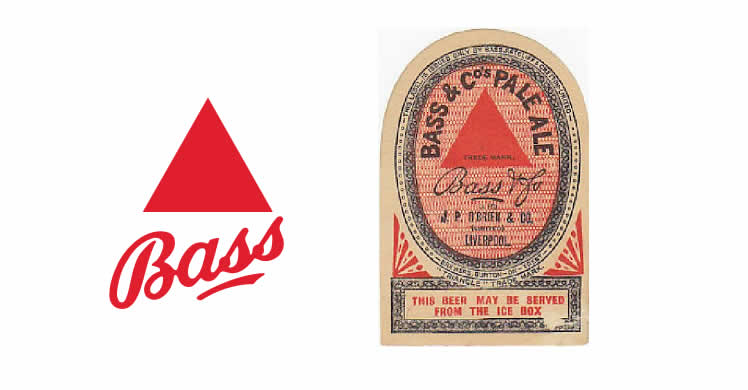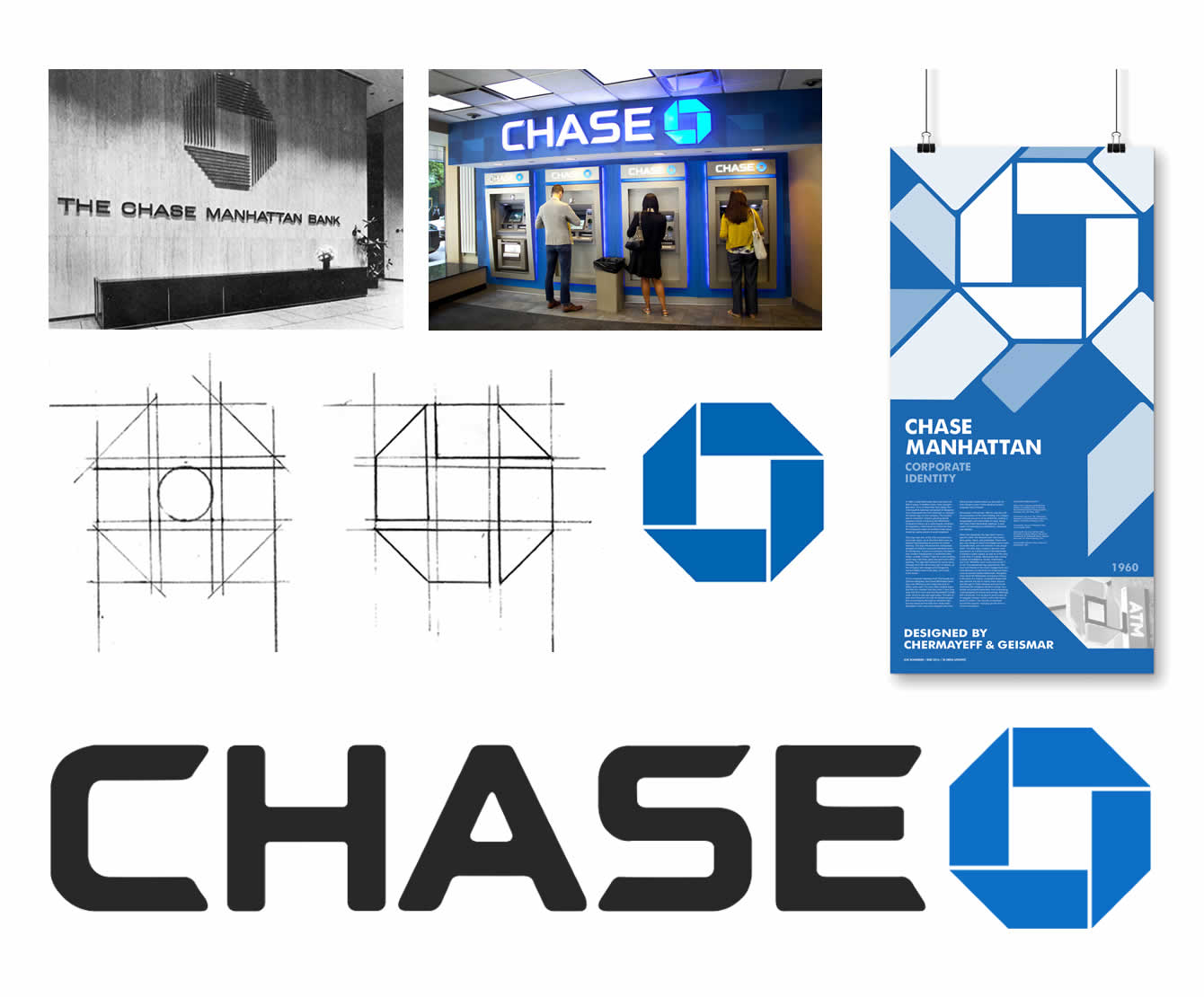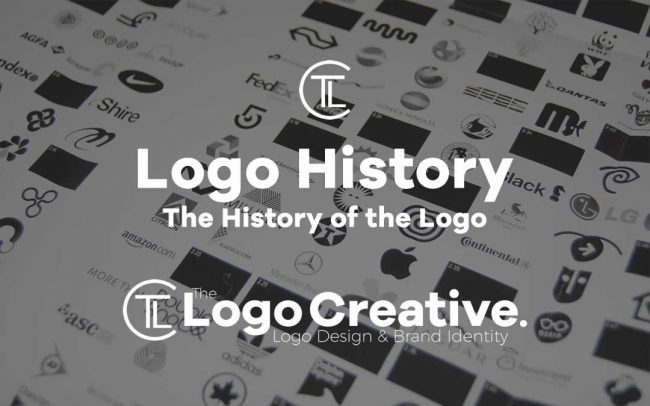In this article we are going to discuss The History of the Logo. Dating back to the Ancient Egyptians, to 1870s with the first abstract logo for Bass and the red triangle. Join us as we look at logo design history and the evolution of the logo.
Table of Contents
The Logo: Then and Now
A logo has the potential to be a very powerful asset for a brand. Many companies are identified by their logo faster than they are by their name, highlighting our continuing shift from text-based to image-based content.
Logos are all around us and well-known ones are easily recognizable by almost everyone. But where did the logo originate? And how has it evolved over time? Join us in this article as we discuss The History of the Logo.
The History of the Logo
The origins of the logo can be dated as far back as the Ancient Egyptians. They used hieroglyphics to brand and identify their possessions, until in medieval times when graphic imagery such as coats of arms was used to distinguish between the statuses of different nobilities.
The current era of logo design began in the 1870s with the first abstract logo, the Bass red triangle. Thanks to the introduction of color printing and the advertising industry, logos became essential for brands if they wanted to be memorable to potential and existing customers.

The Chase logo, which was crafted in 1960 by Chermayeff & Geismar, paved the way for modern logo design. The successful logos we have today predominantly consist of simple and easily recognizable logo marks that are effective in remaining consistent with their corresponding brands.

Logo Designer Paul Rand
The most notable designer of modern logos is Paul Rand, who designed logos for the likes of IBM, ABC, Cummins Engine, Westinghouse, and UPS, among many others. Louis Danziger, a prominent late modern graphic designer, described him as the designer who
“Almost single handedly convinced business that design was an effective tool […] Anyone designing in the 1950s and 1960s owed much to Rand, who largely made it possible for us to work.
He more than anyone else made the profession reputable. We went from being commercial artists to being graphic designers largely on his merits.”
The Evolution of the Logo
Logos today are very different from the logos that have gone before. With the gradual changes in cultures, trends, and consumer behaviors, logos have had to adapt over time. Technological advancements are also causing the role of logos in our culture to evolve.
We can see how logo design has changed in its shift from complexity to simplicity reflected in the visual overload we have experienced as a result of our increasingly complex lifestyles.
A Logo Designer’s Opinion
I recently spoke with Simon Charwey, a logo designer, and asked him if he also believes the role of logos is changing:
“Logos for brands will continue to evolve as customers’ buying decisions continue to evolve. It’s true that a logo doesn’t sell (directly); however, the worst it can do is sell a brand short.”
But with the abundance of logos out there today, has the industry reached saturation point in its creative capacity? Charwey doesn’t believe this to be so:
“It’s important to see this ‘challenge’ and work on coming up with novel ways of designing logos that encourage uniqueness and less repetition.”
Designing an Effective Logo
A logo has to have meaning because it embodies the essence of a brand, and as long as the logo resonates with consumers, so will its meaning. The goal of designing an effective logo should be to create a unique and simple logo mark that is both distinguishable and easily recognizable.
Today, a good logo is flexible in both its design and application and can ideally stand alone. The simpler the logo, the more easily recognizable it is in the modern world.

Taking the Apple logo as an example: it didn’t start out as the simple and distinctive logo we have today. This is because the design of the rainbow Apple logo was flexible enough that it could be altered to complement whatever trend was contemporary at any given time. It also doesn’t need to be accompanied by the brand’s name “Apple”, allowing it to stand independently of the text. As Paul Rand states:
“A logo cannot survive unless it is designed with the utmost simplicity and restraint.”
The Visual Age
As we are living in the Visual Age, images and video are becoming more and more important to a consumer’s online or social media experience. This could be down to a number of factors, such as increasingly busy lifestyles or a change in social media content consumption.
If “a picture paints a thousand words”, we can see how a logo holds its meaning. An image of a logo can say a lot more than the actual words of a brand’s name because of how quickly visuals resonate with consumers today.
Logo vs Brand
While the purpose of a logo is to communicate, the purpose of a brand is to identify. A logo might just be a symbol of what it represents, but it also adds meaning to a brand as it symbolizes that brand’s values.
If we look at the Apple logo again, we would have no emotional reaction to it if we saw it prior to the company’s existence. So today, while a logo might hold more power than the name of the brand it represents, it is still first and foremost a visual representation or symbol of that brand’s identity.
“A logo derives meaning from the quality of the thing it symbolizes, not the other way around.” – Paul Rand
The Future of Logos and Visual Listening
Knowing all of this, can we now determine, or even predict, how logos will continue to evolve further? With the relatively recent introduction of image recognition technology and logo detection, some may believe that logos must be able to adapt in order to make them detectable. However, with the best quality technology, it shouldn’t matter how distinctive a logo’s design is.
Brands should invest in Social Media Monitoring software that provides excellent quality Visual Listening tools for logos if they want to fully benefit from the insights supplied by their analytics. To learn more about logo detection and how brands can benefit from Visual Listening, check out LogoGrab
I hope you have enjoyed reading about The History of the Logo, and be sure to leave your comments below as we love to hear from you the reader.
If you would like more personal tips, advice, insights, and access to our community threads and other goodies join me in our community. You can comment directly on posts and have a discussion.

The Logo Creative – LogoTalk Podcast Ep.1 – The History of The Logo
Useful Links & Great Deals
- The Equipment We Use & Recommend
- Quality Design Bundles
- Get 2 Months free Skillshare
- Get an Exclusive 20% off Logo Package Express
- Learn Logo Design Online
- Logo Design Ideas
FAQ: The History of Logos
What is the history of logos?
The history of logos dates back thousands of years, with early examples seen in ancient civilizations. Logos have evolved from simple symbols to complex designs that represent brands, conveying messages and values.
When did logos become popular?
Logos gained popularity in the late 19th and early 20th centuries, especially with the rise of industrialization and branding. Iconic examples like Coca-Cola and Nike emerged during this period, establishing the importance of visual identity.
What are the key elements of a successful logo?
A successful logo typically includes simplicity, memorability, versatility, and relevance. It should resonate with the target audience while effectively communicating the brand’s essence.
How has logo design changed over time?
Logo design has transformed significantly, moving from intricate and detailed designs to minimalist and versatile approaches. Modern logos often prioritize scalability and adaptability across various digital platforms.
Why are logos important for businesses?
Logos are crucial for businesses as they create brand recognition and trust. A well-designed logo helps differentiate a brand from competitors, making it instantly recognizable to consumers.
What are some famous logo design trends?
Current logo design trends include flat design, geometric shapes, responsive logos, and hand-drawn styles. These trends reflect changing consumer preferences and the need for adaptability in a digital world.

Author Bio
Anna is the Content Marketing Executive at LogoGrab. An avid lover of film, TV, and writing, she believes embracing the Visual Age is the best way to adapt to the constantly evolving digital landscape.

